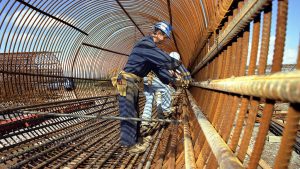With the municipal election in the rearview mirror, construction stakeholders are ready for politicians new and old, to get to work building much needed infrastructure.
The 2022 municipal elections in Ontario took place Oct. 24.
The Residential Construction Council of Ontario (RESCON) supported Mayor John Tory for re-election in Toronto and were pleased he will be returning to the role.
“Mayor Tory got elected on his housing plan which is solid that’s why we endorsed him,” said RESCON president Richard Lyall. “We need the experience. He’s got a housing plan and he’s obviously working well with the province.”
He said he hopes Tory will use the Strong Mayors legislation to good effect.
“This gives Tory much more authority which he really needed,” said Lyall. “He’s got the green light here and now he’ll be able to run the city better.”
He also said the new growth and development department that Tory committed to creating is going to be critical. Tory announced the development of the new city department is underway Oct. 26.
“How it’s structured, how it functions is going to be critical,” said Lyall. “Why it’s so important is because the surrounding 905 municipalities often pick up things from Toronto and I think that will happen.”
Lyall said he was disappointed with the low voter turnout but glad to see some fresh faces have been elected to Toronto City Council. He also mentioned the tight races and wins in Vaughan with Steven Del Duca and Andrea Horwath in Hamilton.
Steven Crombie, manager of government relations and public affairs with the Ontario Sewer and Watermain Construction Association, stated committing to homes is needed but so is committing to the aging infrastructure that is in most municipalities.
“As municipalities grapple with broad sweeping changes to development processes, OSWCA implores newly elected officials to not loses focus on addressing its aging infrastructure,” said Crombie in an email to the Daily Commercial News. “According to the Financial Accountability Office of Ontario estimates the current cost to bring municipal assets (which include sewer and watermain infrastructure) into a state of good repair (in other words, to eliminate the municipal infrastructure backlog) is about $52 billion. While housing affordability and development are likely to garner most of the attention at councils across Ontario, the deterioration of water and wastewater systems are reaching a critical point.”
Addressing the infrastructure backlog for municipalities will come at a considerable cost for capital, he added.
“To ensure capital is allocated appropriately for system maintenance, municipalities should move towards the full cost recovery for their water and wastewater systems,” Crombie said. “Full cost recovery for water and wastewater services were part of the recommendations made by the Walkerton Inquiry and is meant to ensure municipalities provide for long-term operating and capital plans for maintaining all aspects of the water and wastewater systems, including a long-term plan for the replacement of all infrastructure.
“To date, the legislation has not fully implemented the requirement for full cost recovery, however, many municipalities are moving towards or already have implemented full cost recovery to fund water and wastewater services.”
The Residential and Civil Construction Alliance of Ontario (RCCAO) said it will continue to “advocate for proper investment in state-of-good-repair funding and focused investment in new critical infrastructure that addresses the housing crisis, alleviates gridlock and adds needed capacity to keep Ontarians and goods moving between communities.”
RCCAO says more investments in infrastructure are needed to keep up with the growth that is planned for the Greater Toronto and Hamilton Area in the next five to 10 years. RCCAO also supports the creation of Highway 413 and the Bradford Bypass to improve mobility in the region.
Follow the author on Twitter @DCN_Angela










Recent Comments
comments for this post are closed